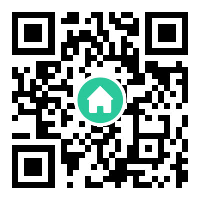Telegram app development has emerged as a pivotal area in the realm of instant messaging and social connectivity. With over 900 million monthly active users, Telegram’s open API and bot platform have created a vibrant ecosystem for developers to build custom solutions, ranging from chatbots to full-fledged applications. Unlike other messaging platforms, Telegram prioritizes privacy, speed, and flexibility, making it an attractive choice for developers aiming to innovate in secure communication, automation, and community engagement. This article explores the core aspects of Telegram app development, including its architecture, tools, and emerging trends.
Core Features of Telegram’s Development Ecosystem
Telegram’s developer-friendly infrastructure is built on its proprietary MTProto protocol, designed for speed and security. The platform offers two primary APIs: the Bot API and the Telegram Client API. The Bot API enables developers to create interactive chatbots that can automate tasks, deliver content, or integrate with external services. For instance, bots can handle payments, manage groups, or even power mini-games. Meanwhile, the Telegram Client API allows developers to build custom clients or modify existing ones, offering unparalleled flexibility in tailoring user experiences. Additionally, Telegram’s TDLib (Telegram Database Library) simplifies cross-platform app development by providing a unified interface for handling messages, encryption, and network operations.

Tools and Frameworks for Building Telegram Apps
To streamline Telegram app development, developers rely on a variety of tools and frameworks. Python’s `python-telegram-bot` library is widely used for bot creation due to its simplicity and extensive documentation. For more complex projects, Node.js frameworks like `Telegraf` offer middleware support and real-time event handling. Mobile app developers often leverage TDLib’s C++ core, which supports iOS, Android, and desktop platforms. Furthermore, platforms like Heroku and AWS Lambda enable scalable deployment of bot backends. Telegram’s official Bot Father tool remains indispensable for generating API keys and configuring bot permissions. These resources empower developers to focus on functionality rather than infrastructure.
Security and Privacy in Telegram Development
Security is a cornerstone of Telegram app development. The MTProto protocol employs end-to-end encryption for secret chats, while cloud chats use server-client encryption. Developers must adhere to Telegram’s privacy guidelines, ensuring user data protection and transparency. Features like self-destructing messages and anonymous polling can be integrated to enhance privacy. However, developers must avoid mishandling encryption keys or storing sensitive data improperly. Telegram’s recent updates, such as passcode locks for bots and granular permission controls, further reinforce security. Compliance with GDPR and other regulations is critical, especially for bots handling payment or personal information.
Future Trends in Telegram App Development
The future of Telegram app development lies in AI integration and decentralized solutions. With the rise of large language models (LLMs), developers are creating AI-powered bots capable of natural conversations and contextual problem-solving. Blockchain integration is another frontier, as Telegram’s Fragment platform demonstrates with its Web3 username auctions. Mini-apps, launched in 2023, allow developers to embed web-based applications directly within chats, opening doors to in-chat gaming, e-commerce, and collaborative tools. Additionally, Telegram’s growing emphasis on monetization—via ads, premium features, and Stars virtual currency—creates new opportunities for revenue-generating apps.
In conclusion, Telegram app development combines cutting-edge technology with a commitment to user empowerment. By leveraging its APIs, prioritizing security, and embracing trends like AI and decentralization, developers can create innovative solutions that redefine digital communication. As Telegram continues to evolve, its ecosystem promises to remain a hotspot for technical creativity and global impact.












